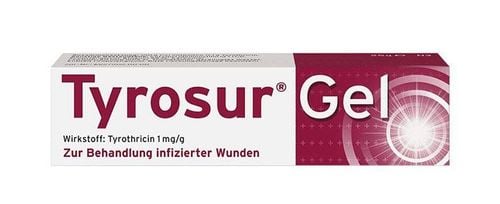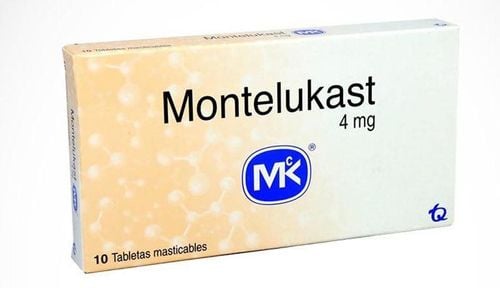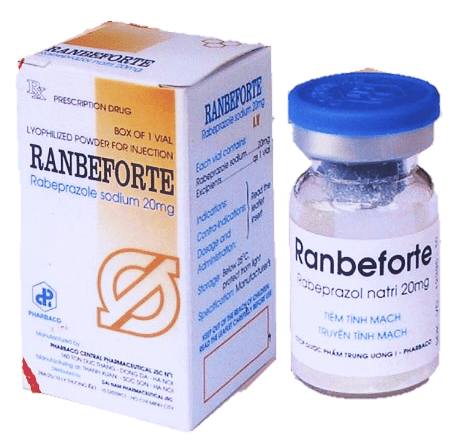This is an automatically translated article.
The drug Sandoz Montelukast CHT 4mg is used in the prevention and treatment of chronic bronchial asthma with the main ingredient being Montelukast. Let's learn more about the Sandoz Montelukast drug line through the article below.
1. What is Sandoz Montelukast?
Sandoz Montelukast drug belongs to the group of drugs acting on the respiratory tract, medicines for asthma and chronic obstructive pulmonary disease.
The drug Sandoz Montelukast FCT 4mg has the main ingredient Montelukast (in the form of Montelukast sodium) content of 4mg. Sandoz Montelukast FCT 4mg is in the form of film-coated tablets and is packaged in boxes of 2 blisters x 14 film-coated tablets.
Sandoz Montelukast is a drug that needs to be prescribed by a doctor, used for over 15 years old and is contraindicated for people with myasthenia gravis, hepatic coma, liver failure, renal failure and peptic ulcer.
2. Indications for use of Sandoz Montelukast
Sandoz Montelukast is used in the following cases:
Prevention and treatment of chronic bronchial asthma in children 15 years of age and older and adults. Includes prophylaxis against daytime and nocturnal asthma symptoms, treatment of aspirin-sensitive asthmatics, and prevention of exercise-induced bronchospasm. Helps relieve symptoms of allergic rhinitis during the day and at night.
3. Dosage - How to take Sandoz Montelukast
Sandoz Montelukast is formulated as granules for children with difficulty in using chewable tablets and is intended for use in children only under adult supervision. Dosage for children from 2 to 5 years old: Take 1 chewable tablet 4mg/day in the evening. If dosing is related to meals, Montelukast should be taken 1 hour before a meal or 2 hours after a meal. No dose adjustment of Montelukast is required in this age group. The chewable dosage form of Montelukast is not recommended for children under 2 years of age. Use treatment to control asthma attacks that occur within a day. Patients should continue to take their medication even after their asthma is under control, as well as during periods of worsening asthma. No dose adjustment is required for patients with mild to moderate renal or hepatic impairment. There are no data on the use of Montelukast in patients with severe hepatic impairment. Use of Sandoz Montelukast as an alternative to low-dose inhaled corticosteroids in mild asthma attacks. Monotherapy is not recommended in patients with moderate asthma. The use of montelukast should be considered as an alternative to low-dose inhaled corticosteroids for children with mild asthma only in the absence of recent severe asthma attacks requiring oral corticosteroids and who do not the possibility of using inhaled corticosteroids. Using Sandoz Montelukast for the prevention of bronchial asthma in children aged 2 to 5 years with bronchospasm mainly due to exercise. Children should be evaluated after 2 to 4 weeks of treatment with Montelukast. If the disease does not respond well to medication, complementary or alternative therapy should be considered. There are 10mg film-coated tablets for patients 15 years of age and older. There are 5mg chewable tablets for children 6 to 14 years old. There is a package of 4mg nuggets for children 6 months to 5 years old. Sandoz Montelukast is taken once a day on an empty stomach or on an empty stomach. To treat asthma, it is recommended to take Montelukast in the evening. With allergic rhinitis, the duration of medication depends on the needs of each patient. For patients with allergic rhinitis and asthma should take Montelukast 1 tablet per day in the evening. Patients 15 years of age and older with asthma and/or allergic rhinitis: 1 tablet 4mg daily.
4. Contraindications to the use of Sandoz Montelukast
Sandoz Montelukast drug should not be used in case the patient is sensitive to Montelukast or to any of its ingredients.
5. Sandoz Montelukast drug interactions with other drugs
The area under the curve (AUC) of Montelukast was reduced by approximately 40% in patients receiving concomitant phenobarbital. Sandoz Montelukast should be used with caution in children, when co-administering CYP3A4 inducers such as Phenobarbital, Phenytoin, Rifampicin.
Montelukast can be used concurrently with other therapies in the prevention and treatment of chronic asthma. In a clinical drug interaction study, the pharmacokinetics of the following drugs were not affected at the recommended dose of Montelukast: Prednisone, Theophyllin, Prednisolone, oral contraceptives such as Ethinyl estradiol and Norethindron 35/1. , drugs Terfenadin, Digoxin and Warfarin .
In vitro studies have shown that montelukast is a potent inhibitor of CYP 2C8. However, data from a drug interaction study involving Rosiglitazone and Montelukast (a representative substrate for drugs primarily metabolized by CYP2C8) showed that Montelukast does not inhibit CYP2C8 in vivo. Therefore, Montelukast does not significantly alter the metabolism of drugs metabolised by this enzyme such as Repaglinide, Paclitaxel, Rosiglitazone.
In vitro studies have shown that montelukast is a substrate of CYP2C8 and to a marked lesser extent a substrate of 2C9 and 3A4. In a clinical drug-drug interaction study involving Montelukast and Gemfibrozil (a 2C8 and 2C9 inhibitor), Gemfibrozil increased the systemic exposure of Montelukast by 4.4-fold. No adjustment in the daily dose of Montelukast is necessary when co-administered with Gemfibrozil or other strong inhibitors of CYP 2C8, but the treating physician should be aware of the potential for increased adverse reactions.
On the basis of in vitro data, clinically important drug interactions with weak inhibitors of CYP 2C8 (such as Trimethoprim) are not expected. Co-administration of Montelukast with Itraconazole, a strong inhibitor of CYP 3A4, did not significantly increase the systemic exposure of Montelukast.
6. Side effects when using Sandoz Montelukast
During the use of Sandoz Montelukast, patients may experience some unwanted side effects such as:
Upper respiratory tract infection. Gastrointestinal disorders: Diarrhea, nausea, vomiting. Hepatobiliary disorders: Serum transaminases (ALT, AST) are elevated. Skin and subcutaneous tissue: Erythema. Body as a whole: Fever Uncommon:
Immune system: hypersensitivity reactions, anaphylaxis occur. Psychiatric: Insomnia, unusual dreams including nightmares, sleepwalking, restlessness, anxiety, restlessness, agitation, aggressive or hostile behavior, depression. Nervous system: Drowsiness, dizziness, paresthesia, hypoesthesia, seizures. Respiratory system: Nosebleeds. Digestion: Indigestion, loss of appetite, dry mouth. Skin and subcutaneous soft tissues: Urticaria, skin bruising and pruritus. Musculoskeletal and Connective Tissues: Tendon pain, joint pain, cramps. Body as a Whole: Edema, weakness/fatigue. Rare:
Blood and lymphatic system: Increased bleeding. Mental: Run. Heart: Palpitations . Skin and subcutaneous tissue: Angioedema. Very rare:
Eosinophilic infiltration. Psychiatric: Suicidal thoughts, hallucinations. Respiratory system: Churg-Strauss syndrome. Hepatobiliary Disorders: Hepatitis, cholestasis, hepatocellular damage and mixed liver injury. Skin and subcutaneous soft tissues: Erythema multiforme, erythema nodosum. Patients should immediately inform their doctor or pharmacist of any unwanted effects encountered while using Sandoz Montelukast.
7. Precautions when using Sandoz Montelukast
Patients need to carefully refer to the drug information on the instructions for use or as directed by a doctor or pharmacist. In addition, you can refer to some more notes below.
Montelukast should not be used concurrently with other products containing similar ingredients. Do not use Montelukast to treat an acute asthma attack. Do not abruptly substitute Montelukast for oral/inhaled corticosteroids. Close clinical monitoring of patients when reducing the dose of systemic corticosteroids in patients receiving Montelukast. Patients with galactose intolerance, glucose-galactose malabsorption, Lapp lactase defect should not take the drug. Patients should be advised not to use oral Montelukast for acute asthma attacks and that appropriate emergency medications should be stocked in this case. If an acute asthma attack occurs, the patient should use short-acting inhaled beta-agonists. Patients should seek medical attention as soon as possible in the event that more short-acting inhaled beta-agonists are needed than usual. In rare cases, patients taking asthma medications, including Montelukast, have reported systemic eosinophilia, and sometimes clinical manifestations of inflammation such as Churg-Strauss syndrome. These are common manifestations when treating disease with systemic corticosteroids. In these cases, consideration should be given to dose reduction or discontinuation of oral corticosteroid therapy. Although an association between Montelukast and Leucotriene receptor antagonists has not been established, physicians should be cautious of rash, vasculitis, eosinophilia, cardiac complications, and/or neuropathy. , worsening symptoms of lung disease appear in the patient. Patients with these symptoms should be examined and re-evaluated treatment regimen. Treatment with Montelukast does not help aspirin and other nonsteroidal anti-inflammatory drugs in patients with aspirin-sensitive asthma. Montelukast causes drowsiness and dizziness, so it should be used with caution when driving or operating machinery. The use of Montelukast is not recommended for pregnant women. There have been reports of animal studies showing no adverse effects on pregnancy or fetal development. However, there are limited data on pregnant women, and should only be used during pregnancy if absolutely necessary and prescribed by a doctor or pharmacist. There have been reports of Montelukast being excreted in human milk in animals. However, it is uncertain whether Montelukast is excreted in human milk. Therefore, the use of Montelukast in nursing mothers is not recommended and can be used during lactation only if clearly needed.
Please dial HOTLINE for more information or register for an appointment HERE. Download MyVinmec app to make appointments faster and to manage your bookings easily.













